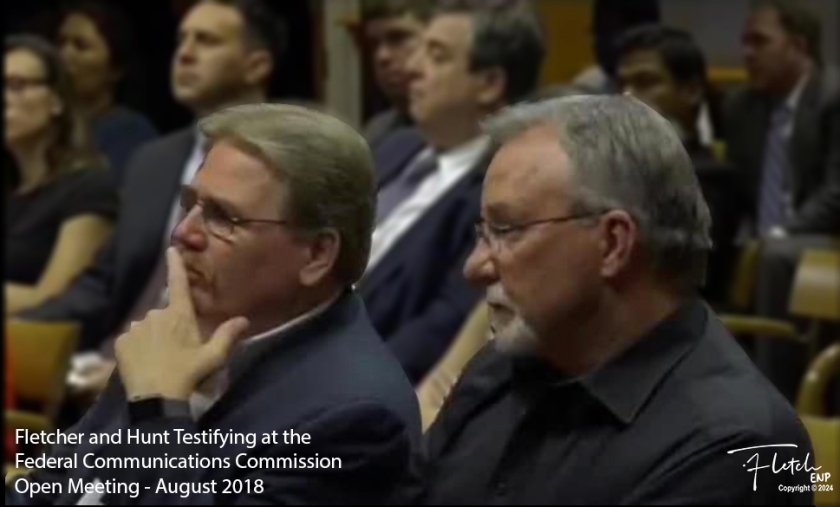On June 22, 2018, precisely 2,192 days ago from today, that a Texas jury awarded the Hunt Family $41.5 million in a wrongful death lawsuit. The reason? A hotel failed to provide emergency services on a hotel room phone, resulting in the tragic death of 31-year-old Kari Hunt – the mother of 3 children. Here’s a recap of the story, putting some detail behind our journey and how we got to today. But FIRST – Thanks to these special folks for making that happen:
DJ Hunt (Kari’s Mom), Dan Wilson (Fellow ENP and communications expert), Martha Buyer (Attorney), Rob Trotta (Suffolk County NY Legislator).
– If you know them or meet them – Please THANK them, they were all instrumental in driving change.
In the realm of public safety and emergency communications, there are life moments that define our paths and push us to make meaningful changes. For me, the story of Kari’s Law has several such moments. It’s a story that transformed my life, and it’s a journey I’ve had the privilege of sharing with incredible advocates like Hank Hunt, Kari’s father. Together, we navigated a long path from a heartbreaking tragedy to a monumental legal triumph that now protects countless lives.
The Tragic Event That Sparked a Movement
In mid-December 2013, my Google Alerts for 911 notified me of a tragic event that would change my life forever. Kari Hunt was attacked and killed by her estranged husband in a hotel room in Marshall, Texas. Although her nine-year-old daughter tried 4-times to call 911, the calls failed because the hotel phone system required dialing a ‘9’ to secure an outside line. This unnecessary barrier to emergency services struck me deeply and became the catalyst for what became Kari’s Law.
My Role Advocating for Change
At this point in my career, I was the Chief Architect for Public Safety Solutions at Avaya, and being an active seasoned professional in emergency communications, I knew I needed to act. I drew on my experience in telecommunications and my years as a Special Officer and Dispatcher in New Jersey to address this critical gap in our emergency response systems. I recognized that direct access to 911 services was non-negotiable, especially in multi-line telephone systems (MLTS) like those in hotels and office buildings. In fact, the change to allow direct dialing for 911 was simple, had zero cost, and was available on most systems in the market.
Determined to make a difference, I leveraged my expertise and industry connections, my colleagues like Dan Willson and Martha Buyer, and their network to build a coalition supporting Kari’s Law, including Suffolk County NY Legislator Rob Trotta, who just took office. Working closely with public safety organizations, policymakers, and stakeholders, Martha Buyer and I crafted a letter to the FCC that emphasized the elimination of any barriers to emergency services on an MLTS. Our relentless advocacy highlighted Kari’s incident, and we pushed it to the forefront of legislative action with the help of then-FCC Commissioner Ajit Pai.
Hank Hunt’s Relentless Pursuit of Justice
Resolving to bring the issue to the FCC in Washington, DC, we joined forces as tireless advocates for change in MLTS legislation. Driven by the devastating loss of his daughter, Hank and I embarked on a mission that would prevent other families from experiencing the same preventable tragedy. Hank launched a Change.Org petition that has gathered 576,771 signatures, captured worldwide attention, and galvanized public and political support for Kari’s Law.
In June of 2018, 4 1/2 years after the tragedy, Hank’s determination was exemplified in his successful lawsuit against the hotel, resulting in a landmark $41.5 million verdict for the family. The jury found the hotel liable for failing to provide a direct path to emergency services. This case underscored a critical legal principle: jury trials for tort cases can set precedents and influence the creation of new laws, even in the absence of existing legislation.
The Legislative Journey to Kari’s Law
Kari’s death and the ensuing legal battle underscored the urgent need for legislative intervention. The passage of Kari’s Law in 2018 marked a significant milestone. It mandated that all MLTS provide direct access to 911 without requiring an additional prefix and that MLTS notify a central point of contact when a 911 call is made, ensuring on-site personnel are aware of the emergency.
Our advocacy for Kari’s Law coincided with broader efforts to enhance public safety communications. The RAY BAUM’S Act §508, named after Ray Baum, a long-time advocate for public safety, was designed to improve the accuracy of location information provided to emergency responders during 911 calls. This Omnibus legislation ensures that dispatchers receive precise location details, regardless of the communication device used to make the call. In fact, Hank was urged to fold Kari’s Law into the RAY BAUM’S Act, as it was likely to be passed; however, as important as this law was, it was also a tribute to Kari, and resolving to include it in the Omnibus bill, would have removed her name, and her legacy. To Hank, that was a complete deal-breaker. Kari gave her life for this, and was going to remain the namesake.
Integration into US Title 47 of the Federal Code
Kari’s Law and the RAY BAUM’S Act were both made law independently and integrated into US Title 47 of the Federal Code, which represents a comprehensive approach to improving emergency communications. Title 47 governs telecommunications in the United States and includes provisions to enhance public safety.
By embedding these requirements into Title 47, we ensured that the principles behind Kari’s Law were part of the regulatory framework governing emergency communications. This convergence addressed the issues highlighted by Kari’s tragedy and established a foundation for ongoing improvements in how emergency services are accessed and delivered requiring a ‘dispatchable location’ as part of RAY BAUM’S Act §506.
Continuing the Legacy: Advancing Emergency Communications with 911inform
In 2020, after leaving NORTEL/Avaya after 18 years, I had the opportunity to further my commitment to public safety by joining forces with Ivo Allen, the innovative founder and CEO of 911inform. This NJ-based startup shared my passion for connecting citizens with public safety services. After working with their incredible team of developers led by Lead Developer Hunter Allen and solution architecture managed by CTO Mike Clark, the 911inform team developed a groundbreaking platform that revolutionized Emergency Event Management in corporate and enterprise environments. Delivering live, graphic-based and interactive floorplans, video camera integration, and full building control with over 350 IoT integrations – DIRECTLY TO 1ST RESPONDERS – were just some of the features delivered as an industry first – and in record time.
Our platform, which received rave reviews from its soft launch in 2019, aligned perfectly with the legislative advancements I’d championed throughout my career. Through its NG911-compliant architecture, the platform supports the functionality established by Kari’s Law and RAY BAUM’S Act.
The 911inform Award-Winning Solution
911inform‘s platform is a comprehensive Emergency Event Management solution designed to bridge the gap between emergency responders and the public. Our technology ensures that emergency services receive accurate, real-time information from various sources, including traditional phones, VoIP systems, and cellular phones, which account for 85% of all 911 calls nationally.
Key features of our solution include:
- Location Precision: Providing precise location information to Public Safety dispatchers and on-site responders enhances the efficiency and effectiveness of emergency response, in line with the RAY BAUM’S Act.
- Real-Time Data Integration: Integrating data from multiple sources, including IoT devices like cameras and building control systems, gives first responders a comprehensive dashboard for faster, informed decision-making.
- Cellular Call Geofencing: Establishing a virtual geofence around customer buildings ensures that when any cellular device makes a 911 call within this perimeter, public safety receives advanced location details and IoT building controls access, including video cameras, door locks, and real-time floor plans.
These capabilities allowed 911inform to capture Frost and Sullivan Innovation awards three years in a row, and the company itself went on to win several awards from the state of New Jersey for Best Place to Work and other categories.
My Role and Vision at 911inform
As a proud member of the 911inform team, I advise senior management and the development team, using my expertise in emergency communications and public safety as they continue to innovate, refine, and expand our solutions. I advocate for adopting 911inform’s technology in new markets and contribute at the industry level to continue the adoption of innovation in emergency response platforms.
Our mission at 911inform is to make emergency services more accessible and effective for everyone. We are committed to staying ahead of the current public safety technology curve and remain poised to continue to lead in future innovations.
A Legacy of Safety and Innovation
From the tragic events that led to Kari’s Law to my role in legislative advocacy and now 911inform, my journey is a testament to the power of commitment and the impact of meaningful change. Our work continues to influence and inspire advancements in emergency communications, ensuring that individuals can connect with lifesaving services more efficiently and reliably than ever before.
Through our efforts and 911inform‘s pioneering solutions, the legacy of Kari’s Law and the RAY BAUM Act principles are preserved and expanded upon, creating a safer, more responsive emergency communications landscape for all.

Follow me on Twitter/X @Fletch911
See my profiles on LinkedIN and Facebook
Check out my Blogs on: Fletch.TV
© 2024, All Rights Reserved, Mark J. Fletcher, ENP
Reuse and quote permitted with attribution and URL

